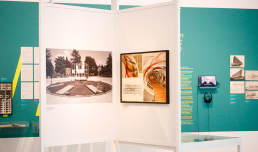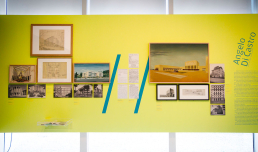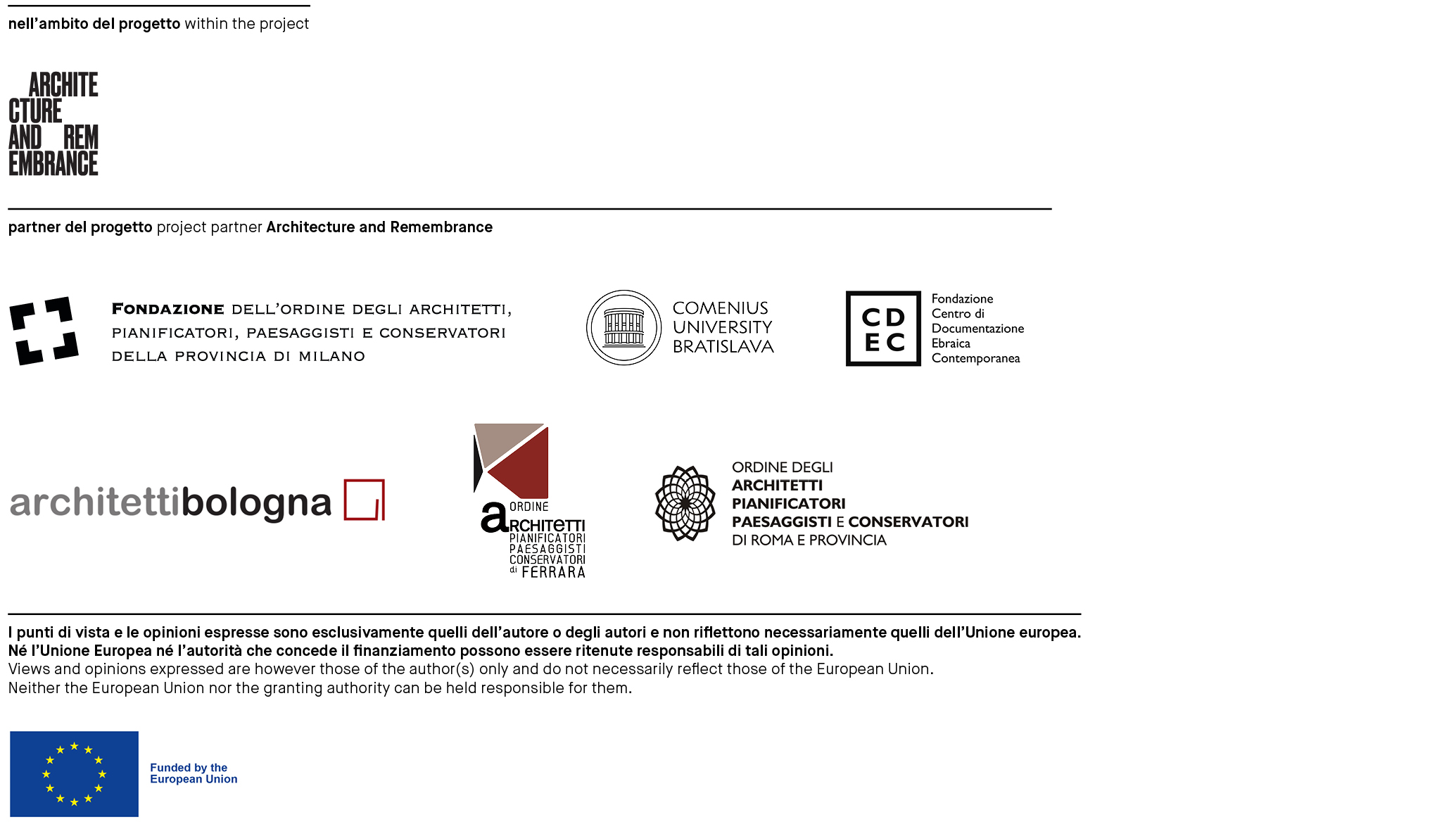Time regainedStories of Jewish architects
centro archivi MAXXI Architettura
Monday closed
Tuesday to Sunday 11 am – 7 pm
EARLY TICKET OFFICE CLOSURES
Saturday and Sunday last entry at 5:30 pm
for young people aged between 18 and 25 (not yet turned 25);
for groups of 15 people or more; registered journalists with a valid ID card; La Galleria Nazionale, Museo Ebraico di Roma ticket holders; upon presentation of ID card or badge: Accademia Costume & Moda, Accademia Fotografica, Biblioteche di Roma, Centro Sperimentale di Cinematografia, Enel (for badge holder and accompanying person), FAI – Fondo Ambiente Italiano, Feltrinelli, IN/ARCH – Istituto Nazionale di Architettura, Sapienza Università di Roma, LAZIOcrea, Palazzo delle Esposizioni, Amici di Palazzo Strozzi, Accademia Nazionale di Santa Cecilia, Scuola Internazionale di Comics, Teatro Olimpico, Teatro dell’Opera di Roma, Teatro di Roma, Università degli Studi di Roma Tor Vergata, Youthcard
valid for one year from the date of purchase
minors under 18 years of age; disabled people requiring companion; EU Disability Card holders and accompanying person; MiC employees; European Union tour guides and tour guides, licensed (ref. Circular n.20/2016 DG-Museums); 1 teacher for every 10 students; ICOM members; AMACI members; journalists (who can prove their business activity); myMAXXI membership cardholders; European Union students and university researchers in Art and Architecture, public fine arts academies (AFAM registered) students and Temple University Rome Campus students from Tuesday to Friday (excluding holidays); IED – Istituto Europeo di Design professors, NABA – Nuova Accademia di Belle Arti professors, RUFA – Rome University of Fine Arts professors; upon presentation of ID card or badge – valid for two: Collezione Peggy Guggenheim a Venezia, Castello di Rivoli Museo d’Arte Contemporanea, Sotheby’s Preferred, MEP – Maison Européenne de la Photographie; on your birthday presenting an identity document
MAXXI’s Collection of Art and Architecture represents the founding element of the museum and defines its identity. Since October 2015, it has been on display with different arrangements of works.

centro archivi MAXXI Architettura





Archive documents, drafts and testimonies restore personal and professional dignity to nine stories interrupted by racial laws.
On 14 July 1938, the Race Manifesto was published in Il Giornale d’Italia, signed by ten scientists and professors, which was to become the ideological basis of the regime’s racist policy. This document was followed by the Racial Laws, aimed at increasingly stripping non-members of the ‘Italian race’ of their rights. In this escalation of the curtailment of freedoms and subtraction of civil rights, other laws were promulgated on 29 June 1939 regulating ‘the exercise of professions by citizens of the Jewish race’.
Daniele Calabi, Angelo Di Castro, Romeo Di Castro, Enrico De Angeli, Vito Latis, Gino Levi Montalcini, Alessandro Rimini, Ernesto Nathan Rogers, Nina Livia Viterbo
Engineers and architects do not escape this bureaucratic machine, ousted from competitions or assignments that have already begun, crushed at the beginning of their careers or erased from their professional lives despite decades of activity.
The exhibition is conceived as part of the project ‘Architecture and Remembrance. The discrimination of architects in nazi-fascist regimes”.
header: Enrico De Angeli, Villa Gotti, Bologna 1933-36. Courtesy Historical Archive of the Order of Architects of Bologna